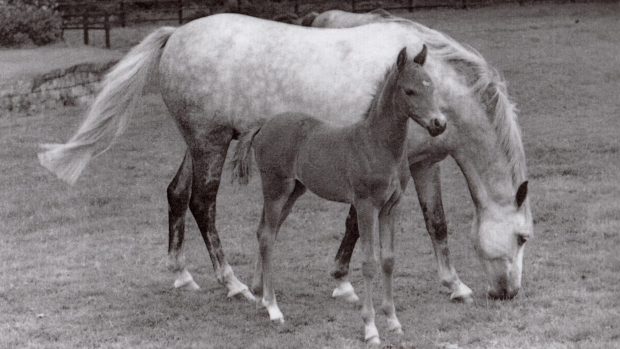Rebecca Penny, a native pony specialist who has won at HOYS and RIHS while also working as a website designer and online marketing consultant, on why we must promote the versatility of our native breeds
The recent announcement on Facebook from the long-established Welsh Pony and Cob performance event regarding the Welsh Pony and Cob Society’s (WPCS) decision to reduce the funding to just 17% of what it has historically given, quite rightly sparked significant debate and concern.
As an avid supporter of native pony breeds and their versatile capabilities, I share the sentiment of many who believe that this decision represents a significant step backward for the promotion and recognition of these animals.
While acknowledging that the WPCS may need to streamline their operations and look to save on costs, it’s essential to note that they don’t look to be in dire financial straits. Thus, the decision to discontinue funding for a performance event with such historical significance raises questions about the society’s priorities and commitment to showcasing the full potential of Welsh ponies and cobs.
Performance schemes and events play a pivotal role in reshaping perceptions and elevating the desirability of native breeds beyond the confines of the show ring. Not only that, but they also give riders the opportunity to try their hand at other disciplines.
For years, Olympic event rider Laura Collett was an attendee at the Welsh Pony and Cob performance event. She was a young rider that brought ponies up through the ranks and undoubtedly used events like this to further her skills outside of the show ring and they would have provided her with a great stepping stone on her road to success.
“Actively promote versatility”
Breed societies, in general, have a responsibility to be proactive in championing the performance abilities of their breeds across the disciplines.
Recognising and rewarding achievements in activities such as dressage, eventing, driving and endurance not only highlights the versatility of native ponies but also attracts new members to the societies and encourages riders to consider native ponies for their equestrian pursuits.
In a competitive market where riders have numerous breeds to choose from, societies must strategically position their native breeds to thrive. Some societies are guilty of being a little stuck in the past and need to focus on promoting ponies that meet the modern-day rider’s needs, or they risk being left behind. One only needs to look at current class entries to see that the demand is in more performance-based classes.
While some native breeds naturally lend themselves to these disciplines better than others, it’s crucial for societies to actively promote the versatility of all breeds. Otherwise, they are at risk of becoming an afterthought in the equestrian community.
The exemplary efforts of societies like the British Connemara Pony Society serve as inspiring examples of what can be achieved through strategic promotion and advocacy, ultimately leading to increased demand and recognition for native breeds worldwide.
By investing in performance events and schemes, societies can cultivate a positive image of their breeds, attracting a diverse range of riders and ensuring their long-term viability and relevance.
Furthermore, performance events provide a platform for breeders and owners to showcase the capabilities of individual animals, contributing to the genetic improvement of the breed and preserving its heritage traits.
By neglecting the promotion of performance activities, breed societies risk stifling the advancement of their breeds and limiting their appeal to a broader audience.
● What do you think breed societies could do to promote native ponies as versatile performance animals? Let us know by emailing hhletters@futurenet.com, including your name, nearest town and country, for the chance for your letter to appear in a forthcoming issue of the magazine
- This exclusive column will also be available to read in Horse & Hound magazine, on sale Thursday 18 April
You might also be interested in:

Shock as popular Welsh section B put on rare breeds ‘at risk’ register

How to buy the perfect Welsh section B pony including what to look for and where to start your search

The Welsh section B: the athletic and multi-talented Welsh pony

Palomino foals and stallions on the beach: check out this magical Welsh Section B stud

Subscribe to Horse & Hound magazine today – and enjoy unlimited website access all year round
Horse & Hound magazine, out every Thursday, is packed with all the latest news and reports, as well as interviews, specials, nostalgia, vet and training advice. Find how you can enjoy the magazine delivered to your door every week, plus options to upgrade your subscription to access our online service that brings you breaking news and reports as well as other benefits.





